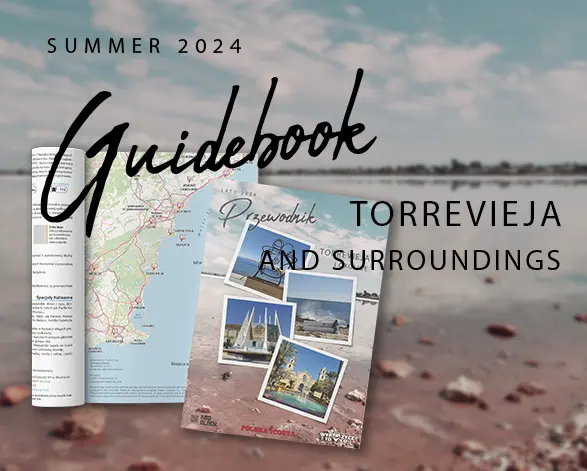
Christmas Traditions in Poland: How Do We Celebrate Christmas?
Christmas is one of the most important and festive holidays in Poland, full of deeply rooted traditions and symbols that have united Poles for generations. Across the country, Christmas celebrations share many common elements, such as Christmas Eve, the breaking of the wafer and Pasterka, but in different regions the holiday takes on local hues. Let's take a closer look at the traditions that make up this special, magical time.
Wigilia - The Heart of Polish Christmas
Christmas Eve is the most anticipated day of Christmas in Poland. Traditionally, it falls on December 24 and is a preparation for the Christmas celebrations proper. Christmas Eve is a time of family gatherings, a common table and heartfelt gestures. Customs related to preparations, decorating the house, cooking food and taking care of the holiday mood are deeply rooted.
The Symbolism of Christmas Eve: The Wafer and Wishes
On the Christmas Eve table, usually covered with a white tablecloth and decorated with Christmas tree branches, there is a wafer - a symbol of reconciliation and togetherness. Sharing the wafer is a touching moment in which family and friends wish each other health, happiness and prosperity. The wafer is a highly symbolic element that reminds us of forgiveness and unity. It is a gesture full of kindness that emphasizes that all those gathered around the table are close to each other.
12 Christmas Eve Dishes
Traditionally, 12 dishes appear on the Polish Christmas Eve table, symbolizing the abundance and unity of the twelve apostles. The Christmas Eve menu is dominated by Lenten dishes - meatless dishes prepared with fish, vegetables, mushrooms and cabbage. Among the most commonly served dishes are borscht with ravioli, pierogi with cabbage and mushrooms, carp, kutie or dried fruit compote. Each of these dishes has its place in tradition and holiday symbolism - carp is a symbol of life and health, while poppy seeds and honey, which can be found in kutia, symbolize wealth and happiness.
Additional Plate for the Unexpected Guest
An extra plate also traditionally appears on Polish Christmas Eve tables. This symbolic gesture is an expression of openness and hospitality, in line with the belief that no one should spend Christmas alone. The extra table setting is a symbol for a stray wanderer, someone who might need shelter and warmth - or simply symbolizes a readiness to welcome someone unexpected.
Chocolate and Christmas Decorations
Christmas tree decoration is an integral part of the Polish holidays. The Christmas tree appeared in Polish homes in the 19th century, taking over the place of traditional Christmas decorations, such as the podłaźniczka - a green branch or the top of the tree hung over the Christmas table. Today's Christmas trees are decorated with baubles, lights, gingerbread and traditionally prepared ornaments, such as handmade angels or paper chains. The star placed on top of the Christmas tree symbolizes the Star of Bethlehem, which led the wise men to the place where Jesus was born. In Poland, tradition says that the appearance of the first star in the sky is a sign to start the Christmas Eve supper. The Christmas tree has its own symbolism - it is a tree of life, a symbol of hope, love and eternity. In some homes, decorating the Christmas tree is a festive moment and is often done after nightfall to create a special atmosphere.
Caroling and Polish Carols
Carols are Christmas songs that have resounded in Polish homes and churches for centuries, adding to the charm of Christmas. Poland is one of the few countries in the world where there is such a rich tradition of carols - the oldest Polish carols date back to the Middle Ages. Carols such as \“Silent Night,\” \“God is Born\” and \“Lulajże Jezuniu\” are known and sung by successive generations. Caroling, or visiting homes with carols, is a tradition popular in many regions, especially in villages and small towns. Carolers, often dressed as biblical characters, sing carols and wish the householder good luck. In return, they receive small gifts or refreshments. This tradition, although rarer today, is still cherished in some regions, such as Podhale, where caroling is a real spectacle.
Shepherdess - Christmas Night Mass
A shepherdess is a solemn mass celebrated at midnight from December 24 to 25, which is a symbolic commemoration of the birth of Jesus. In Poland, it is a special moment when people gather in large numbers in churches to celebrate the birth of the Savior together. Pasterka in different parts of Poland is sometimes celebrated with slightly different accents. For example, in the highland areas of Podhale, the mass is celebrated to the accompaniment of highland bands, and the faithful come dressed in traditional costumes. A shepherdess service is both an expression of faith and community - a moment of reflection on the essence of Christmas and its spiritual meaning.
Christmas in Poland - The Magic of Tradition and Community
Christmas traditions are also a return to the roots, where the magic of ancient beliefs was intertwined with everyday life. It was believed that Christmas Eve night was special - the boundaries between the human and spirit worlds almost disappeared, and animals could speak with a human voice. Folk beliefs related to the weather are also an integral part of the Polish Christmas. A snowy Christmas Eve heralded abundance and prosperity in the coming year, while a rainy one could be a sign of more difficult times. Observing the surroundings was a way for past generations to predict the future, which added an extra dimension of mystery to the holidays. All these elements - spiritual, familial and cultural - make Polish Christmas more than just a holiday. It is a time to unite with loved ones, enjoy being together and cherish a heritage that enriches our everyday life and reminds us of values worth passing on to future generations.







